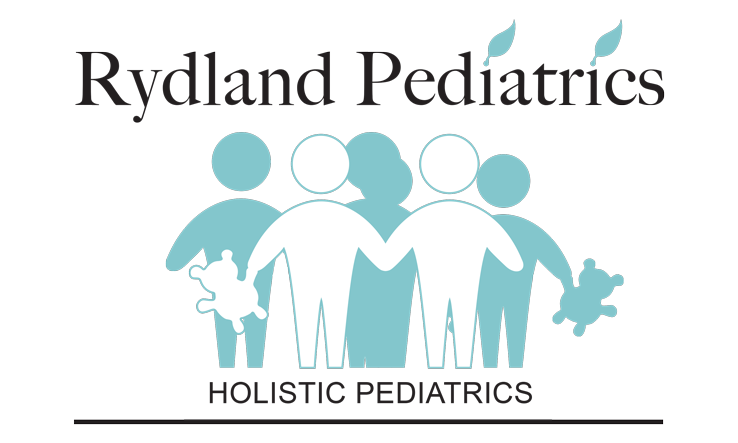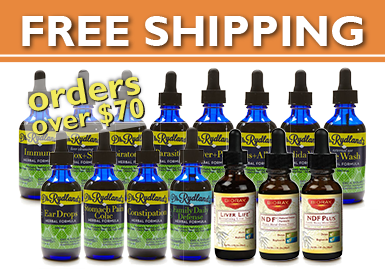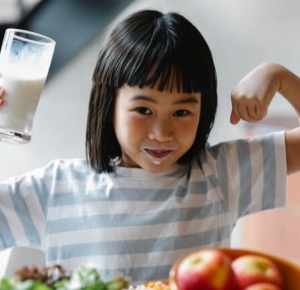Children’s Fever Management
- July 15, 2014
- Health and Wellness
Eric N. Rydland, M.D., Board Certified Pediatrician
Fever is your child’s natural response to many common illnesses and conditions. Most commonly, a bacteria or virus that causes an illness causes the release of substances (called “pyrogens”) that stimulate the brain to elevate the normal baseline body temperature. Infrequently, there may be other causes for fever in children.
Fever is beneficial for most children unless they have underlying conditions that may be aggravated by elevations of body temperature. This is because, for a specific illness caused by a virus or bacteria, the elevated body temperature causes stimulation of your child’s immune system, and therefore helps defend against the cause of it. There is a release of natural body chemicals that attack the virus or bacteria directly and allow the body cells, such as the white blood cells to more effectively combat the infection.
Fever, therefore, in most cases, need not be eliminated; associated symptoms are usually more important than the fever itself. For example, it is more important to treat a child with a 101O F temperature who appears ill (e.g. marked lethargy, irritability, etc.) than a child with a 103O F temperature who is playful, alert, active, and readily taking liquids.
When your child feels feverish, please take the child’s temperature first. In children three years old or less, a rectal temperature is the most accurate measurement. A normal rectal temperature is 99.6O F. Place the thermometer so that the silver colored bulb is just inside the rectum for three to four minutes (for digital thermometers wait until it beeps or stops flashing).
In children over three years old, an oral (by mouth) temperature is usually possible and is a very accurate measurement also. A normal temperature is 98.6O F and fever is defined as over 100O F orally and 101 O F rectally. See the chart that follows for Celsius equivalents.
Axillary temperature (under the arm) is not very accurate, as it may be the same as a rectal temperature, or as much as three degrees Fahrenheit (1.7 degrees Celsius) less. Other measurements of temperature, such as forehead tapes or ear thermometers are less accurate in my opinion. An axillary temperature can be used as a screening method, but with I do not consider the current ear thermometers accurate enough for any use.
TEMPERATURE CONVERSION CHARTS
| DEGREES FAHRENHEIT | DEGREES CELSIUS |
| 98.6 | 37.0 |
| 99.6 | 37.6 |
| 100.0 | 37.8 |
| 101.0 | 38.3 |
| 102.0 | 38.8 |
| 103.0 | 39.4 |
| 104.0 | 40.0 |
| 105.0 | 40.6 |
| 106.0 | 41.1 |
| DEGREES CELSIUS | DEGREES FAHRENHEIT |
| 37.0 | 98.6 |
| 37.5 | 99.5 |
| 38.0 | 100.4 |
| 38.5 | 101.3 |
| 39.0 | 102.2 |
| 39.5 | 103.1 |
| 40.0 | 104.0 |
| 40.5 | 104.9 |
| 41.0 | 105.8 |
FEVER MANAGEMENT
You should immediately contact a physician for:
- Any baby less than two months old who has a temperature over 100.4O F rectally.
- Any fever over 106 O F rectally or 105 O F orally.
- Any fever where the child appears seriously ill.
- Give plenty of clear, translucent liquids. Mild and liquids that are cloudy are not helpful to supply the higher fluid requirements during a fever. It is estimated that there is an increase in water requirements of 10% for every degree Fahrenheit (0.56 degrees Celsius) above normal. Although not clear, breast milk is not only an excellent source of the required liquids but also contains numerous substances that will assist your nursing child in combating the infection.
- Give conventional medicines, such as acetaminophen (e.g. Tylenol) and/or ibuprofen (e.g. Motrin or Advil) in appropriate doses for temperatures over 104O F rectal temperature or its equivalent or if your child appears ill. Remember that fever helps the immune system fight off the infection and works to restore the natural body balance so the purpose of treatment should not necessarily be to eliminate all temperature elevations. Acetaminophen may be given as often as every four to five hours; ibuprofen every six to eight hours. You may also use herbal and homeopathic treatments for fever along with the conventional medicines.
- One notable exception is the rare child that suffers from “febrile” seizures, or seizures caused by fever. Children who suffer from this condition should be aggressively treated for fever until such time as the condition no longer is present.
- Dress your child normally. Clothes retain body heat and may increase the body temperature. I once saw a newborn baby with a temperature of 107 O due to overdressing.
- Cool compresses with a vinegar-water mixture may be used for any fever. To make the mixture combine ½ cup apple cider vinegar with one pint of room temperature distilled or reverse osmosis water. Apply this mixture as a compress with a cloth to small parts of your child’s body in rotation. DO NOT USE ALCOHOL MIXTURES as compresses as this has been associated with alcohol intoxication and low blood sugar, which may cause seizures! I also do not recommend placing children in a bath because this may be stressful to the body and cause too rapid of a change in temperature.
- If your child has fever, even intermittently, for more than 24-48 hours you need to schedule an appointment and see a qualified medical physician. This is to determine the cause and necessary treatments for the fever.
- You should NEVER use aspirin in children unless specifically instructed to do so by a qualified medical physician.
- Avoid all table sugar, unrefined sugar, sucrose, corn syrup and date sugar, along with artificial sugar substitutes such as aspartame and Sucralose. These all stress body systems, especially the immune and detoxification systems. Minimize or eliminate dairy products during the illness. You may also wish to use natural methods to stimulate the immune system as early as possible during the illness (e.g vitamin C, zinc, Immune Formula, etc.)
HERBAL TREATMENTS
I recommend the use of herbal and/or homeopathic remedies as a first line treatment for fever, unless the fever is high or significantly affecting your child. Neither of these methods will cause an interaction with either acetaminophen or ibuprofen.
Herbal management of fever would include appropriate doses of such herbs as white willow bark, boneset, elder, yarrow and peppermint. The kidsWellness Fever Formula is a combination of herbs I developed from 15 years experience in herbal management of fever and pain. The herbs, in proper amounts may be used every two to three hours as needed. (Again, they may be used in addition to conventional medicines.)
HOMEOPATHY
Homeopathic remedies include: Belladonna (primary first aid remedy-also if there is a red, flushed face, intensely hot skin, red mucous membranes, glassy eyes, especially if there is nervous excitability), Pusatilla (fever with little or no other symptoms, weepy, clinging, changeable moods, thirstless, worse with warmth), Nux Vomica (worse in open air, chilly, worsened by uncovering, may have digestive complaints), Ferrum Phos (less flushed than Belladonna, alert and observant). Several low-potency combination remedies are available at health food stores also.
MEDICINES
When absolutely necessary you may choose from the following medications: acetaminophen and ibuprofen. The dose depends upon weight and is usually listed on the label. Since the medications may have a different strength, I am listing the milligram amounts and not volume (e.g. mL. or teaspoons). Acetaminophen dose is 40 mg for 6-11 pounds, 80 mg. for 12-17 pounds, 120 mg. for 18-23 pounds, 160 mg. for 24-35 pounds. This dose may be used every four to six hours (not to exceed five doses in any 24 hour period of time).
Ibuprofen doses are 50 mg. for children 13-17 pounds, 100 mg for 18-35 pounds, 150 mg. for 36-47 pounds, 200 mg. for 48-59 pounds. The dose may be repeated every six to eight hours.
These medications may be alternated in difficult to manage fevers and may also be given along with herbs and/or homeopathic preparations.
SUMMARY
Fever, while it may reflect underlying illness and may be serious at times, need not always be treated. Natural methods may be tried first unless the fever is serious or prolonged. As always, you should consult with your child’s physician in all medical matters.
Dr. Eric N. Rydland, graduated from the University of Miami undergraduate and School of Medicine in 1974 and 1978 respectively and completed his pediatric training at the University of Miami Affiliated Hospitals in 1981. He is pediatric board certified by the American Board of Pediatrics. During his nearly 30 years of clinical experience Dr. Rydland has researched and studied the holistic field and alternative treatments. Integrating these holistic treatments with traditional medical care based upon the wisdom only God can give, has given thousands of patients optimal health benefits. This has been achieved through work with many published authors in the alternative field, his experience, and devine wisdom. In addition to the kidsWellness products our site features other products he uses in his clinical practice. Dr. Rydland is a frequent guest on radio and television, speaker at medical seminars and public conferences, and a published author. He is the Founder and Developer of kidsWellnessTM Incorporated (October 1999)
Upcoming Events
- No Events
WHAT OUR PATIENTS ARE SAYING
Testimonial 1
How I wish I weren't writing this and that by some feat of providence we could have brought you with us to Texas – I don’t know if I’ll ever have the confidence and esteem for another pediatrician that I felt when consulting with you about Frank’s health. Thank you so much for being there when we needed you! Again thank you for everything!
Testimonial 2
Sheri, Hollywood
Sheri, Hollywood
Testimonial 3
Elizabeth, Miami Springs
Elizabeth, Miami Springs


